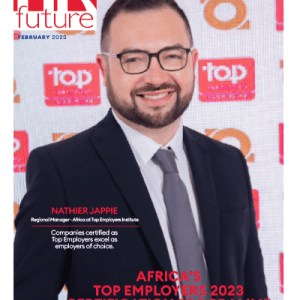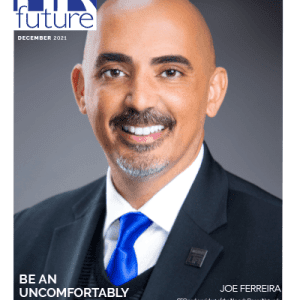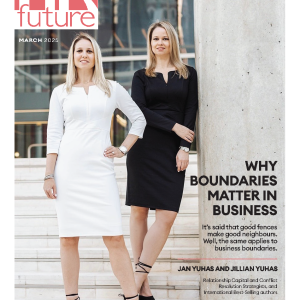Employee benefits are no longer just about days off, retirement plans, or overtime pay. In today’s competitive landscape, they have evolved into crucial tools for retention, empowerment, and overall employee experience. As companies strive to differentiate themselves, tailored benefits can provide a competitive edge. However, Human Resource (HR) professionals, while experts in their respective disciplines, often lack the specialised knowledge to strategically align benefits with organisational goals. This is where partnering with an employee benefits expert becomes essential.
There is no such thing as ‘one size fits all’
Many companies still view benefits as checkboxes, offering standard packages without considering whether they are effective for their specific workforce. This misalignment with employees’ needs can result in wasted resources and missed opportunities for engagement.
Employers need to ask themselves several questions if they are to begin to offer employee benefits that have a meaningful impact on both their business and the lives of their staff, such as: What goals are we trying to achieve with our benefits? Do our current benefits suit the profile of our employees? How do we measure the success of these benefits?
By answering these questions, organisations can better tailor their benefit offerings.
However, while HR professionals are highly skilled in areas such as tax, payroll, and general employee administration, structuring benefits as strategic tools for employee engagement, retention, and satisfaction often requires specialised expertise that may fall outside their usual focus. The market is witnessing a growing realisation: to maximise the impact of employee benefits, you need more than just compliance with basic requirements.
A well-structured benefits package is no longer just a perk; it is a competitive differentiator. In a rapidly changing work environment, benefits that fail to meet the needs of diverse and evolving employee profiles – like Gen Z, for example – are ineffective. Customisation, flexibility, and innovation in benefits offerings are now critical to attracting and retaining talent. Engaging with an expert can help organisations evaluate whether their benefits are achieving the desired outcomes and how they can adapt their strategies to meet new challenges.
How can employee benefits enhance the employee experience?
Employee benefits directly contribute to job satisfaction, engagement, and overall well-being. When benefits are structured thoughtfully, they positively impact retention, productivity, and company loyalty. On the flip side, benefits that are poorly aligned with employee needs can lead to disengagement and increased turnover.
It has become essential to align benefits with employee needs to maximise engagement and return on investment. This begins with understanding the diverse needs of your workforce as a critical first step in ensuring that benefits packages effectively address those needs. Benefits should be seen as tools for empowerment, tailored to the unique profile of your employees. For example, younger generations might prioritise flexible work arrangements or student loan assistance, while older employees may value retirement planning and healthcare support.
Failing to customise benefits can lead to dissatisfaction, employee churn, and negative company culture. Unhappy employees can damage a company’s reputation, and customers will eventually feel the impact. In contrast, well-aligned benefits improve not only retention but also overall company performance, as happy employees create happy customers.
Key strategies for effectively structuring benefits
Flexible benefit plans are vital to meet diverse needs. Having a cafeteria-style benefits plan allows employees to choose from a range of options that suit their individual needs. This approach gives employees a sense of ownership over their benefits, leading to higher satisfaction levels. Some companies have successfully implemented such plans, offering a mix of additional vacation days, wellness allowances, or professional development funds.
In addition, it is vital to incorporate an element of personalisation and customisation. Employee demographics, career stages, and personal goals should influence how benefits are structured. By personalising benefits to fit various employee profiles, companies ensure greater levels of inclusivity and relevance. For instance, mid-career employees might appreciate eldercare support, while recent graduates may prioritise loan repayment assistance.
Holistic wellness programmes are becoming increasingly popular as an addition to employee benefits, covering not only physical health but also mental, emotional, and financial wellbeing. Offering mental health support, financial counselling, and fitness programmes can significantly improve the employee experience, enhancing overall satisfaction and retention.
Measuring the impact of benefits on employee experience
Another important consideration is to measure the effectiveness of employee benefits to ensure they are delivering maximum return on investment. A key step in determining if benefits are effective is to track specific metrics, such as employee satisfaction scores, engagement levels, turnover rates, and benefit utilisation. Regular feedback and surveys are invaluable in understanding whether your benefits structure aligns with employee needs and if adjustments are necessary. This feedback loop ensures that benefits stay relevant and effective over time.
Why expertise matters
No two organisations are the same, and employee needs differ across industries and demographics. An external employee benefits expert brings an objective perspective, asking crucial questions that internal teams may overlook. Have you asked your employees what benefits matter most to them? Do your benefits align with your company’s values and long-term goals?
An expert can help businesses customise their benefit packages to ensure alignment with the company’s mission, vision, and values. They can also implement mechanisms to track the effectiveness of benefits. For example, if commuting is an issue, offering hybrid work arrangements could be beneficial. But how do you measure whether this change improves work-life balance? Employee feedback and real-time tracking are essential.
Structuring and tailoring employee benefits to meet the needs of your workforce is not just an HR function; it is a strategic business decision that can directly impact employee retention, productivity, and overall satisfaction. An expert employee benefits partner can help you navigate the complexities of modern benefits packages, ensuring that they align with your company’s goals and values while meeting the diverse needs of your workforce.
By regularly revisiting and evolving your benefits structure with the guidance of an expert, you can create a dynamic, supportive environment that empowers employees and drives long-term success.
Pauline Magoxo is the Corporate Key Account Manager at Essential Employee Benefits.


























